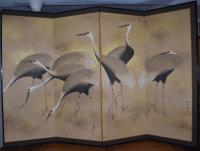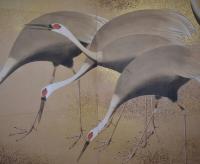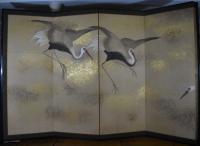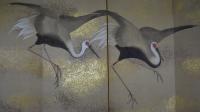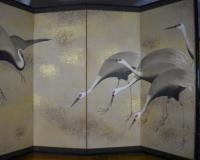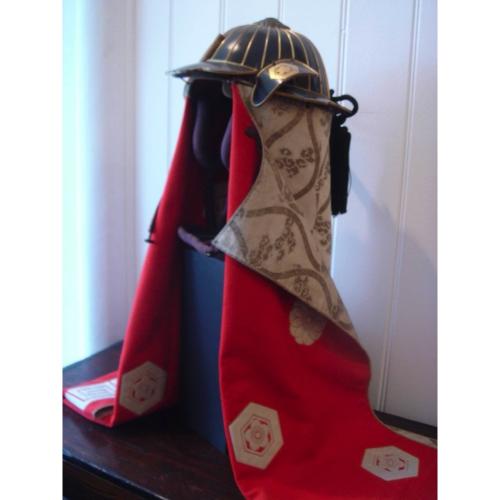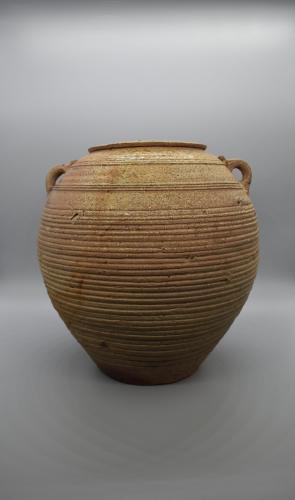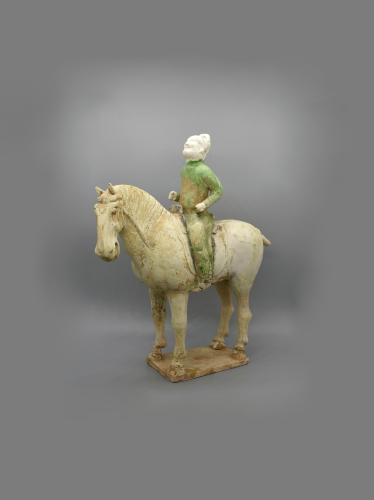
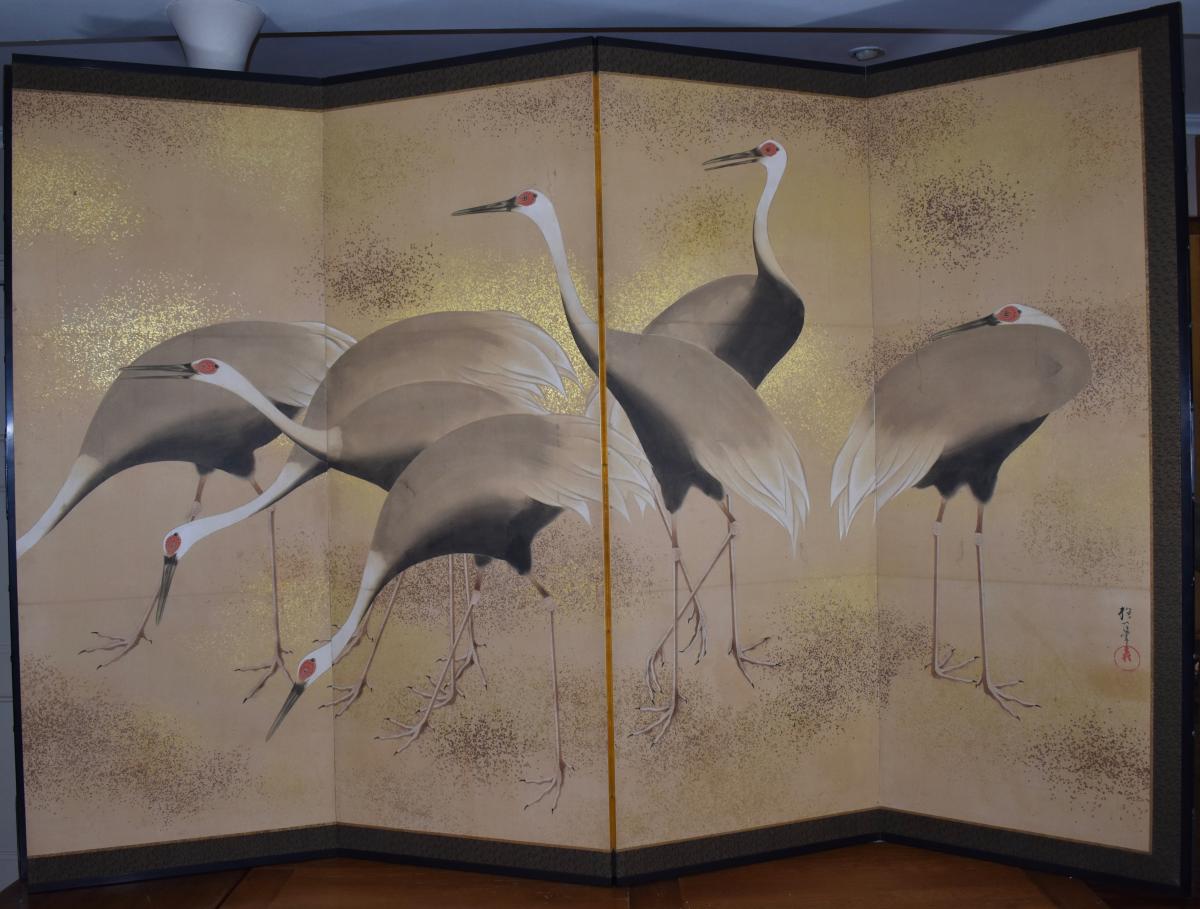
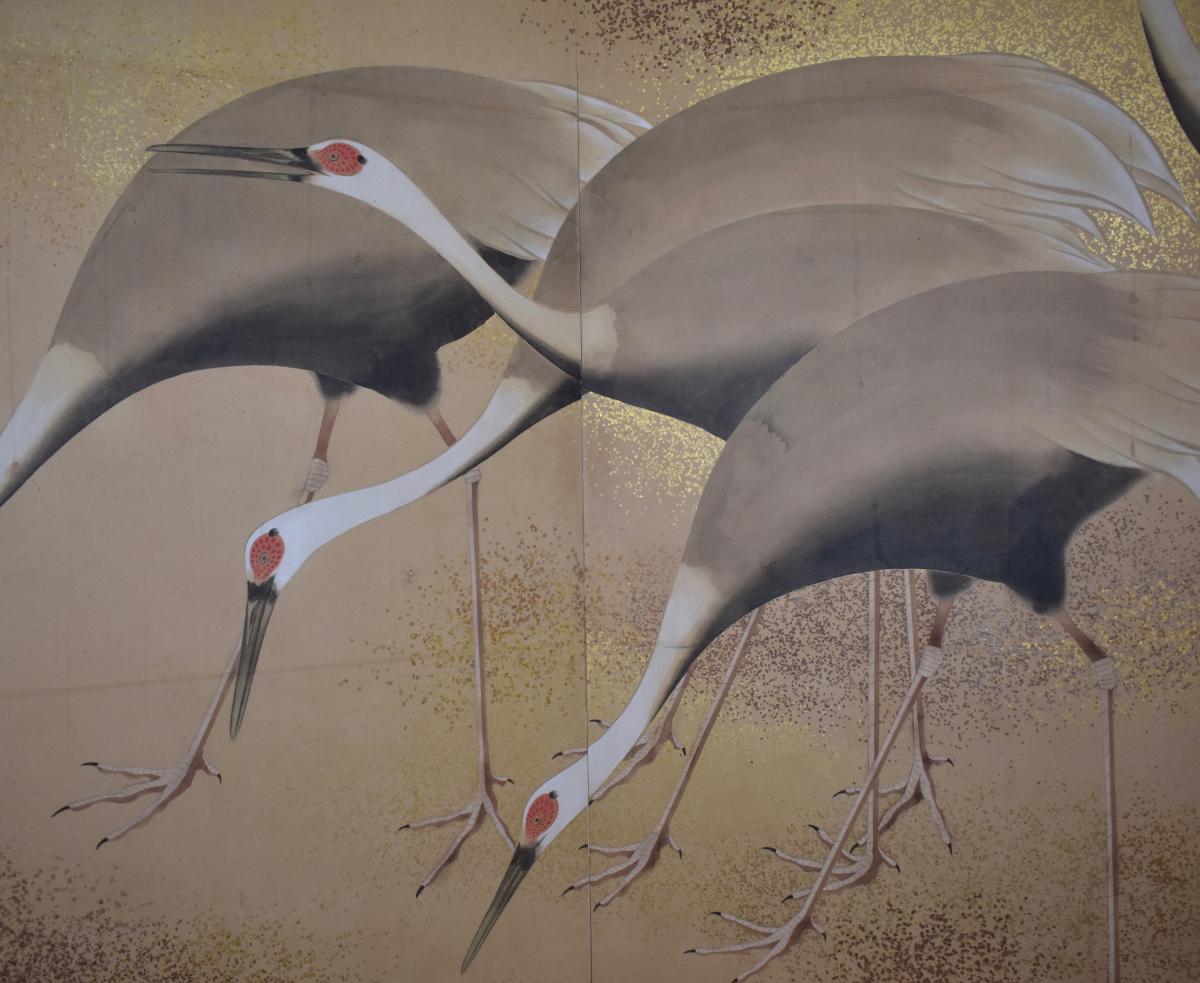
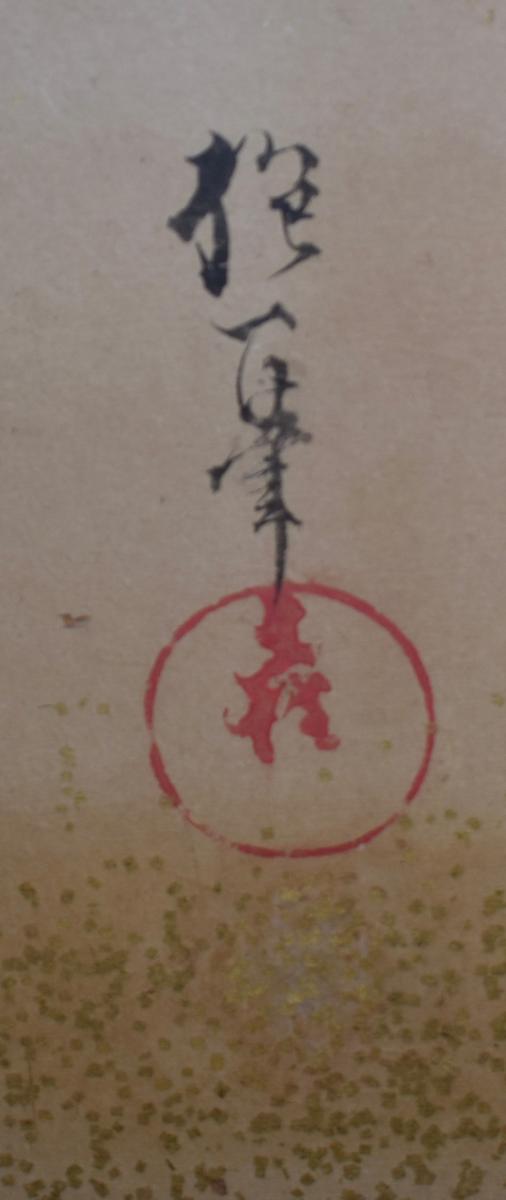
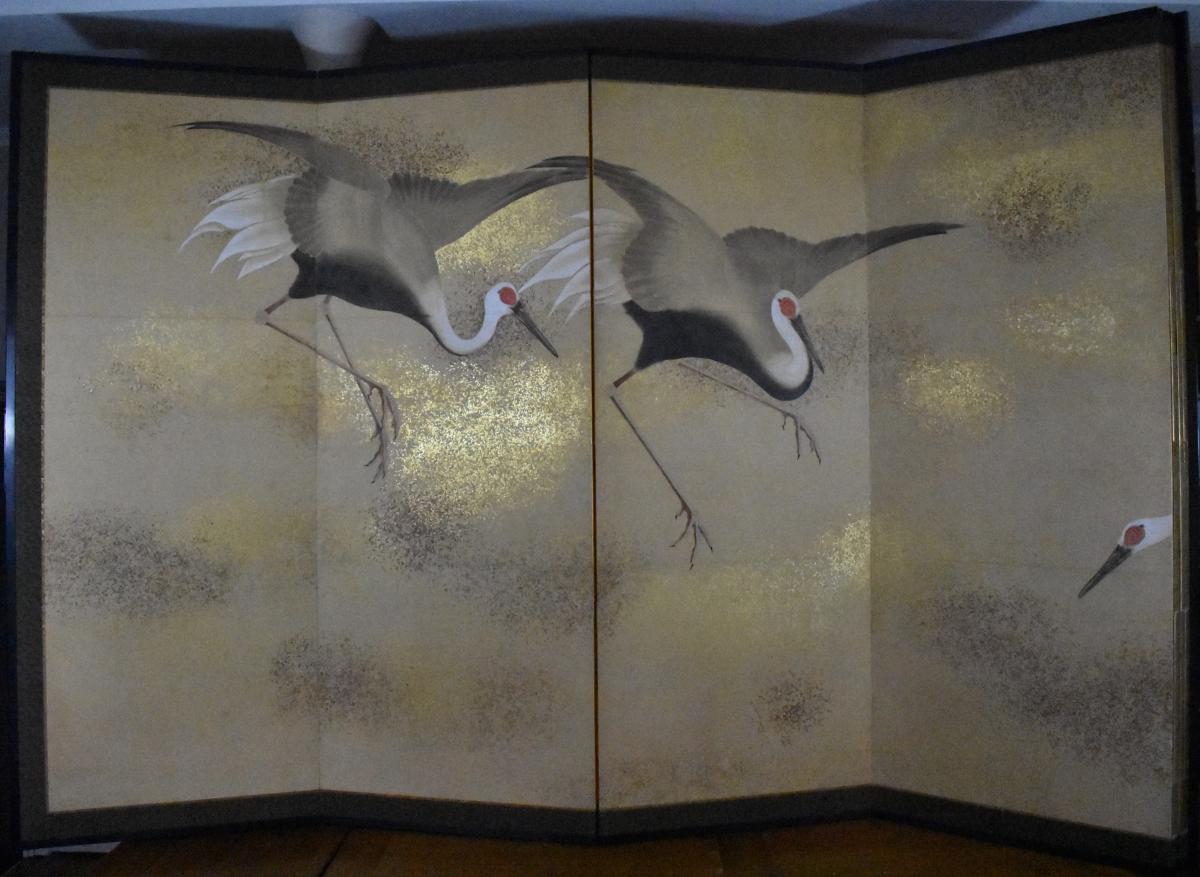
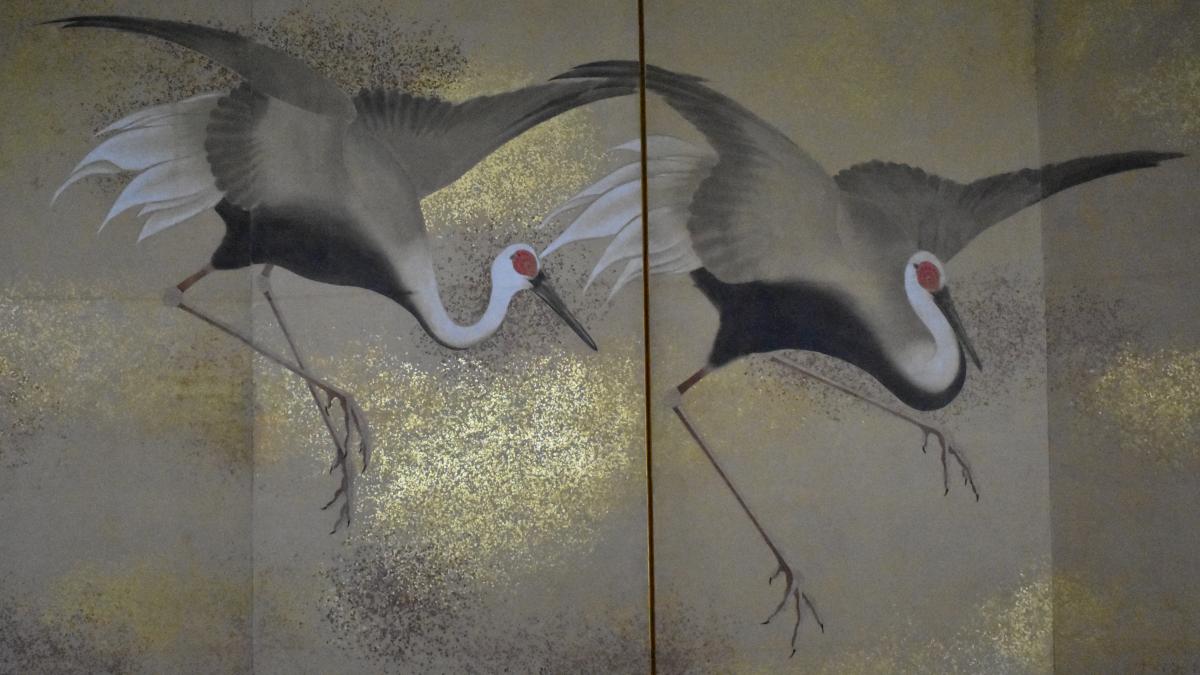
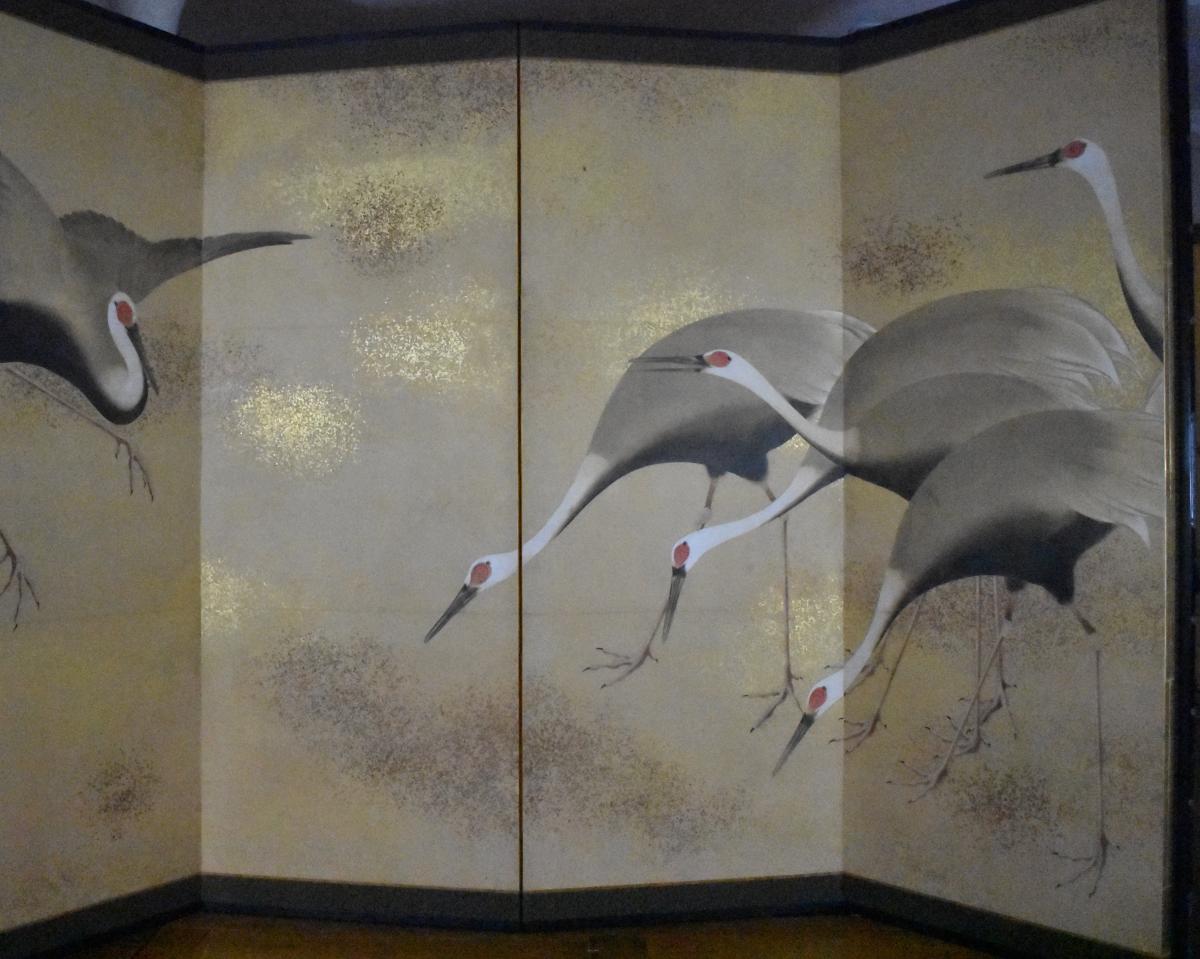
This object is eligible for a Certificate of BADA Provenance
The BADA Standard
- Since 1918, BADA has been the leading association for the antiques and fine art trade
- Members are elected for their knowledge, integrity and quality of stock
- Our clients are protected by BADA’s code of conduct
- Our dealers’ membership is reviewed and renewed annually
- Bada.org is a non-profit site: clients deal directly with members and they pay no hidden fees
Eight-panel folding screen paper, ink, watercolours, and gold. Signed; Hoitsu-Hitsu and red seal mark.
Seven cranes in search of food are joined by two more. Four birds have raised their heads and watch the landing companions with interest. The one whose back is turned on them has also turned its head to look round.
Cranes are known for forming couples which subsequently incubate the eggs and guard the younglings together, but mating is undertaken in large groups. They also gather into large flocks to fly to distant areas in picturesque V formations.
In this excellent example of a Rimpa school painting, the artist strikes a harmonious balance between realism and decorative quality. He shows the cranes in motion, moving with tremendous grace.
At the same time, the gold sprinkled on the background into shapes resembling small clouds makes the scene look unreal, taking the birds into an ideal space, undistracted - admires their beauty and picturesque dance.
The seven cranes on the ground are captured in different poses but their wings resting on their side endow them with a static quality. And then the spread wings, bent legs and necks of the two birds flying in from the left add dynamism to the composition.
As is the case with numerous Japanese works of art, harmony is attained here despite the asymmetry. The signature points to Hoitsu (1761-1828), a Rimpa master who skilfully combined various stylistic elements.
Before he chose the Rimpa school, he had apprenticed with a number of workshops of the Kano and Maruyama schools, and also with Utagawa Toyoharu, an ukiyo-e artist, and So Shiseki of the Nanga school.
His work made the Rimpa school's style more vivid in the late 18th and early 19th centuries, attracting many new students. They soon joined the movement aiming to revive traditional Japanese art.
Dimensions
W 532cm, H 179cmStock number
(3855) (15)The BADA Standard
- Since 1918, BADA has been the leading association for the antiques and fine art trade
- Members are elected for their knowledge, integrity and quality of stock
- Our clients are protected by BADA’s code of conduct
- Our dealers’ membership is reviewed and renewed annually
- Bada.org is a non-profit site: clients deal directly with members and they pay no hidden fees


